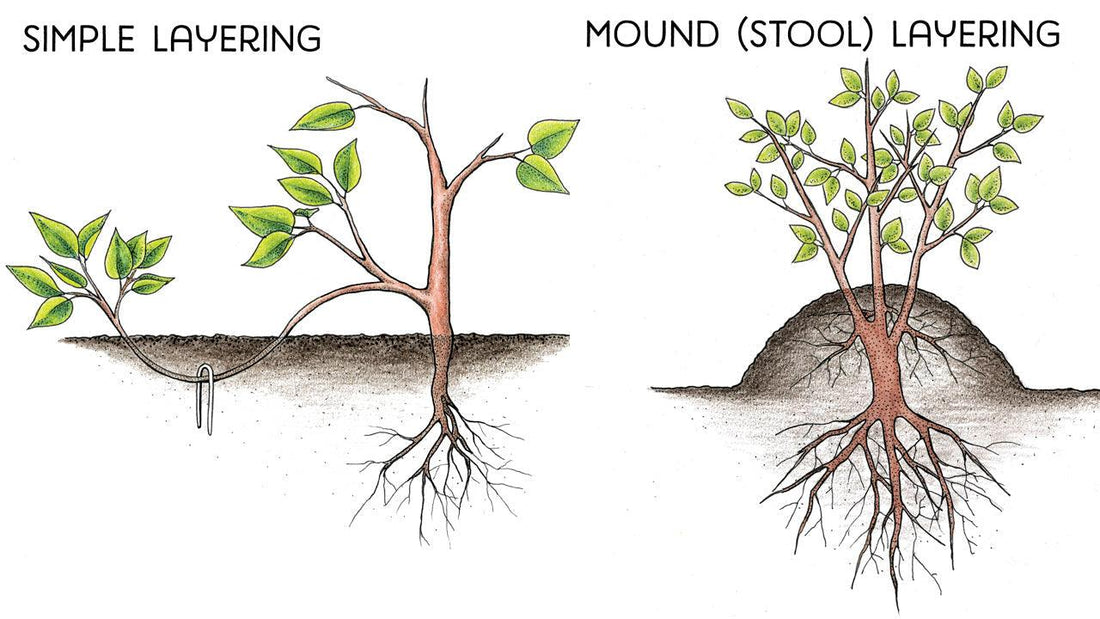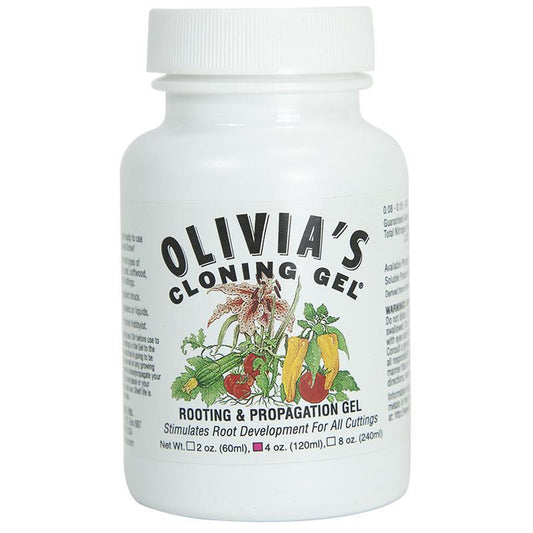Layering in Plants: How Layering Propagation Works
Layering in plants is a time-tested method of asexual reproduction that allows gardeners to clone desirable plant varieties with a high success rate. Unlike propagation by cuttings, which involves severing a stem from the parent plant, layering keeps the stem attached while it grows roots. This technique—called layering propagation—is ideal for both beginner and advanced gardeners looking to propagate by layering and expand their garden without relying on seeds.
Layering propagation is particularly useful for shrubs, vines, and herbaceous perennials. With several types of layering techniques available, including simple layering, ground layering, and air layering, gardeners can select the best method based on plant type and available space.
If you want to learn even more, explore propagation books to deepen your understanding of layering vegetative propagation and other methods.

What is Layering in Plants?
Layering in plants is a form of vegetative propagation where a stem or branch develops roots while still attached to the parent plant. Once roots form, the stem is severed and grows independently. This approach is especially useful for plants with flexible stems or woody structures.
How to Layer: Start by bending a healthy stem down to the ground. Wound the underside of the stem with a sharp knife and apply rooting hormone to stimulate root development. Bury the wounded section in soil or sphagnum moss, and secure it with ground staples. Maintain moisture until roots form.
This low-risk, high-reward technique makes layering plants an excellent option for propagating ornamental shrubs, fruiting vines, and even indoor houseplants.

Types of Layering Techniques

Simple Layering
Simple layering plant propagation is one of the easiest methods. A single, flexible stem is wounded and buried in soil while still connected to the parent plant.
- Best time: Early spring or fall
- Ideal for: Spider plants, hydrangeas, raspberries, philodendrons
- Media: Use peat moss or loose potting soil
- Tools: Ground staples, rooting hormone
This method is particularly effective for those learning how to layering for the first time.

Tip Layering
In this technique, only the tip of a shoot is buried. It’s common in plants that naturally root from their shoot tips, such as blackberries and raspberries.
- Dig a hole 3–4 inches deep and insert the shoot tip
- Cover with soil and water consistently
- Tip roots form in several weeks
Serpentine Layering (Compound Layering)
Ideal for long, vining stems, serpentine layering involves burying the stem at several points.
- Great for clematis, wisteria, pothos, and grape vines
- Bend stem to the ground and alternately bury and expose nodes
- Secure each buried point with staples or ties
- Produces multiple rooted segments from a single stem
Mound Layering

This method is suited for shrubs that produce multiple shoots.
- In early spring, prune the plant hard
- As new shoots emerge, mound soil around them
- Roots will form at the buried stem bases
Best for spirea, flowering quince, and lavender.
French Layering
A technique used to maximize propagation:
- Hard prune early in spring
- The next spring, remove shoot tips and peg stems horizontally
- Mound soil over new vertical growth (side shoots)
- By fall, separate and transplant each rooted shoot
Air Layering
Air layering is suitable for larger or hard-to-bend stems:
- Select a healthy branch at least pencil-thick
- Wound a 1-inch section of bark
- Apply rooting agent, wrap with moist sphagnum moss, and seal with plastic wrap
- Roots will develop in 2–12 months
- Once visible, remove and transplant
Stooling (a variation of Mound Layering)

Stooling layering is used in rootstock production:
- Prune plant in winter
- Mound soil around new spring shoots
- Harvest rooted shoots in fall for transplanting
Perfect for apple rootstocks and woody ornamentals.
Used successfully for rubber plants, citrus trees, and camellias. For step-by-step visuals, check our guide on cuttings and wounding.
How to Choose the Best Method for Your Plant
- Simple Layering: Best for flexible, trailing houseplants and vines like heart-leaf philodendron.
- Ground Layering: Ideal for shrubs like hydrangea, spirea, and flowering quince. Learn more from our article on propagating shrubs and trees.
- Air Layering: Excellent for indoor trees or woody perennials where bending the stem is impractical.
Whether you use simple layering propagation or more advanced air layering, be sure to use high-quality transplanting tools to handle young rooted plants without damaging them.
Plants That Naturally Propagate by Layering
Some species naturally reproduce through layering:
- Blackberries: Tips root when they touch the ground
- Strawberries: Produce runners that root into new plants
- Succulents: Some form pups or offshoots (e.g., hens and chicks)
- Ivy and creeping fig: Ideal for serpentine layering due to their nodal rooting ability

Conclusion: Why Use Layering Vegetative Propagation?
Layering vegetative propagation is an efficient, low-cost, and effective method to clone your favorite plants. From simple layering to more complex techniques like air layering and stooling, this method ensures a strong root system and high survival rates.
Whether you're layering plants to expand your perennial garden or multiply houseplants, layering offers unmatched benefits:
- No need for expensive equipment
- Higher success rates than traditional cuttings
- Strong, established roots upon transplant
Don’t forget to use non-GMO and organic seeds when starting your garden for a healthy, sustainable foundation.
Want to expand your garden even more? Don’t miss our step-by-step cutting propagation guide to explore other reliable methods alongside layering propagation.
FAQs About Plant Layering Propagation
-
What is the difference between layering and cuttings?
- Layering keeps the stem attached to the parent plant while rooting, unlike cuttings that are severed and rooted separately. Layering typically has higher success due to continuous nutrient support from the parent.
-
How long does it take for layered plants to root?
- Depending on the plant and method, it can take anywhere from 4 weeks to 12 months. Air layering often takes the longest, while simple layering may yield roots in under 2 months.
-
What is the best season for layering propagation?
- Early spring or fall is best for most types of layering in plants. This timing allows root systems to establish before temperature extremes.
-
Which plants benefit most from ground layering?
- Shrubs like hydrangea, quince, and spirea are excellent candidates. Ground layering is perfect when you can’t bend the entire plant but have accessible lower stems.
-
Can I propagate houseplants through simple layering?
- Absolutely! Trailing plants like pothos, heart-leaf philodendron, and spider plants are easy to propagate using simple layering indoors.
-
Why should I use rooting hormone?
- Rooting hormone encourages faster and stronger root development, especially on hardwoods or slow-rooting species.
-
What if my layered stem doesn’t root?
- Check that the wound is fresh, the soil is moist, and the stem is securely anchored. Reapply rooting hormone and ensure adequate warmth and humidity.



2 comments
George, I would possibly do more research on propagating apples. But it is worth a try to air layer a branch from the tree. I would do it once the tree starts to come out of dormancy. We sell rooter pots or you can use the plastic bag method as well.
I have two types of apple trees…the first is an old favorite here on the farm and I suspect I should air-layer it before it dies on me; the other is a Courtland about 10 years old semi-dwarf. What is the best weather to do this (I live in Brrrrrr Wisconsin just across the river from the Twin Cities)